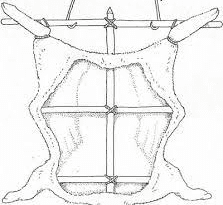What to Feed Rabbits
Today we are going to be discussing about the different classes of rabbit feeds we have and what to feed your rabbits.
Rabbits in the wild all over the world successfully consume a wide variety of plant material. Various types of dry and fresh grasses and plants with leaves comprise the largest portion of the wild rabbit diet.
Rabbits will also eat bark on trees, tender twigs and sprouts, fruits, seeds and other nutritious foods in much small amounts. This is important to know when we decide what is a healthy diet for our house rabbits.
What are the basics of a good house rabbit diet?
A rabbit’s diet should be made up of good quality pellets, fresh hay (timothy, other grass hays, or oat hay), water and fresh vegetables. Anything beyond that is a “treat” and should be given in limited quantities.
What makes a good pellet?
Pellets should be fresh, and should be relatively high in fiber (18% minimum fiber). Do not purchase more than 6 weeks worth of feed at a time, as it will become spoiled. Pellets should make up less of a rabbit’s diet as he or she grows older, and hay should be available 24 hours a day. Alfalfa pellets are fine for younger rabbits but timothy pellets are preferred for older rabbits.
What kinds of veggies should I feed my rabbit?
When shopping for vegetables, look for a selection of different veggies–look for both dark leafy veggies. Stay away from beans and rhubarb.
Is feeding hay important?
Hay is essential to a rabbit’s good health, providing roughage which reduces the danger of hairballs and other blockages.
What quantities of food should I feed babies and “teenagers”?
- Birth to 3 weeks–mother’s milk
- 3 to 4 weeks–mother’s milk, nibbles of alfalfa and pellets
- 4 to 7 weeks–mother’s milk, access to alfalfa and pellets
- 7 weeks to 7 months–unlimited pellets, unlimited hay (plus see 12 weeks below)
- 12 weeks–introduce vegetables (one at a time, quantities under 1/2 oz.)
What quantities of food should I feed young adults? (7 months to 1 year)
- introduce timothy hay, grass hay, oat hay, and other hays; decrease alfalfa
- decrease pellets to 1/2 cup per 6 lbs. body weight
- increase daily vegetables gradually; make sure your rabbit can tolerate
- fruit daily ration no more than 1 oz. to 2 oz. per 6 lbs. body weight (because of calories)
What quantities of food should I feed mature adults? (1 to 5 years)
- Unlimited timothy, grass hay, oat hay
- 1/4 to 1/2 cup pellets per 6 lbs. body weight (depending on metabolism and/or proportionate to veggies)
- Minimum 2 cups chopped vegetables per 6 lbs. body weight; always introduce vegetables and greens slowly to make sure your rabbit can tolerate
- fruit daily ration no more than 2 oz. (2 Tbs) per 6 lbs. body weight.
What quantities of food should I feed senior rabbits? (Over 6 years)
- If sufficient weight is maintained, continue adult diet
- Frail, older rabbits may need unrestricted pellets to keep weight up. Alfalfa can be given to underweight rabbits, only if calcium levels are normal. Annual blood workups are highly recommended for geriatric rabbits.
If I feed fewer pellets, how do I compensate?
When you feed a lower quantity (or no) of pellets, you must replace the nutritional value without the calories, which is done by increasing the vegetables. Also, a variety of hay must be encouraged all day long, we do this by offering fresh hay a couple of times a day.
(1) Concentrates feeds Include pellets
They are low fibre and high in digestible nutrients. They are available on market and can be fed with hay.
(2) Dry roughage feeds
These include hay and straws. These feeds are high in fibre but low in digestible nutrients. Large quantities are needed to sustain the animal life.
For young rabbits choose hay that is fine stemmed, leafy, green and free from mould.
(3) Succulent feeds
Feeds that are fed in green stages such as green grass and vegetables and root crops.
Fresh green feeds and root crops should and be used as supplements to concentrate part of the diet because they are primarily composed of water.
And should be introduced to diet slowly because they can contribute to diarrhea.
Some examples of feed stuffs fed to rabbits :
Carrots, cassava leaves, sweet potato vines (leaves), sweet potato sweet and sweet potato sweet peels, bean leaves, cabbages ,maize leaves.
Grasses include but not limited to guinea grass, Napier grass etc.
Ready to start advertising your products or services? then Visit www.WorldMarketSite.com to get started.
Wish to diversify to other businesses but don’t have any idea of which to go into? Don’t worry as we get you all covered. Visit: www.Worldmarketsite.com to get the comprehensive list of Amazing Business Ideas with Little or No Capital to Start.









